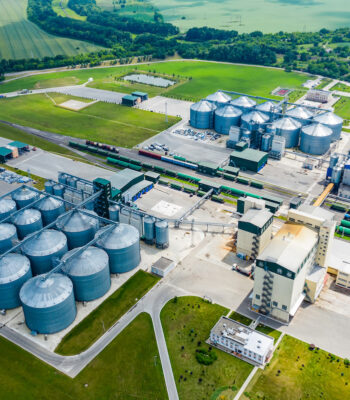Nature abhors a vacuum—and so do consumers. Companies that fail to provide transparent, thorough communication about their products’ environmental impacts risk facing harsh consequences: consumers are likely to fill the void with assumptions and misinformation.
Take, for example, the myth that electric vehicles are worse for the environment than gas-powered cars. Widespread media coverage about the environmental impact of EV battery production kept this myth alive and pervasive. But the EV industry had an effective tool in its back pocket to dismantle objections in the form of life-cycle assessment (LCA), which shows that over the lifetime of the vehicle, emissions are over 60% lower for EVs than gas-powered cars.
Life-cycle assessment—and related product carbon footprint (PCF) analysis—can help companies proactively avoid the pitfalls of misinformation while meeting the growing demands for transparency and accountability from investors and regulators. These methodologies offer a standardized way to quantify and report environmental impacts. But which one should you use, and why? Keep reading for a comparison.
What is life-cycle assessment (LCA)?
Life-cycle assessment is a cradle-to-grave assessment of the environmental impact associated with all stages of a product’s life: from raw material extraction through materials processing, manufacture, distribution, use, and disposal. In an LCA, the definition of “environmental impact” includes multiple categories like emissions, resource use, biodiversity, pollution, and much more.
LCAs are defined by a series of global standards, most notably ISO 14040, ISO 14044, and the GHG Protocol’s Product Standard.
What is a product carbon footprint (PCF)?
A product carbon footprint is a value that demonstrates a product’s global warming potential (GWP) by summing up all greenhouse gas emissions, standardized in CO2 equivalent, associated with the product.
LCA vs. PCF: how are they different?
A PCF is more narrowly defined than an LCA, focusing on just one category of environmental impact: global warming potential as expressed through greenhouse gas emissions. A PCF can also have a more narrowly defined scope.
System boundaries: cradle to gate vs. cradle to grave
When performing a PCF, you’ll define the system boundaries, or the scope, of the project. This can include the product’s full life cycle, from “cradle” (resource extraction) to “gate” (product manufacturing) or “grave” (product disposal).
An LCA, by definition, covers the entire lifecycle of a product from cradle to grave.
Pitfalls and benefits of LCA
With its broader scope, life-cycle assessment paints a more complete picture of a product’s effects on the environment. This also means that LCA can prevent shifting environmental issues from one impact category to another—for example, cutting emissions by switching to biofuels, without considering the potential water consumption and deforestation associated with growing biofuel crops. Additionally, a full LCA is encouraged or required by several regulations, standards, and frameworks across regions and industries.
Because LCAs are standardized, they provide enough information to compare products from different companies. They also result in enough information to cover multiple additional applications, like an environmental product declaration (EPD).
On the other hand, LCA is a complex and time-consuming process, which requires deeper expertise, more data, and greater resources to complete.
Pitfalls and benefits of PCF
With its focus on GHG emissions, a PCF gives you a clear, single metric to communicate to stakeholders and on which to base decisions. The narrow scope also means it can be completed more quickly, with less expertise and fewer resources required.
However, the limited scope can present issues like burden-shifting to other impact categories, and the potential for greenwashing. A PCF is also limited in its application; it won’t provide enough information for an EPD or some regulatory requirements. And because the scope of PCFs can be defined differently from one company to another, the resulting information can’t be compared apples-to-apples.
LCA vs. PCF: which is right for your product?
Ultimately, the choice between PCF and LCA depends on the resources available, the goal of the analysis, industry norms, and long-term plans. For example, a company may start by analyzing only the GHG emissions impact of a product to achieve a science-based target, while planning to conduct a full life-cycle assessment down the road.
Both LCAs and PCFs have a valuable role to play in helping companies be more transparent about the environmental impact of their products.
While LCAs are more comprehensive, PCFs are much, much better than nothing, and they can be a strong step in the right direction toward performing a full LCA. In a world where regulators, investors, and consumers are increasingly vocal about their demand for transparency and their distaste for greenwashing, these tools are becoming essential. They help fill the vacuum of meaningful environmental impact data that, if left empty, can lead to misconceptions and lost trust.
By embracing these tools, particularly the more comprehensive LCA, companies protect themselves from the pitfalls of an information vacuum—and they also position themselves as leaders in the transition to a low-carbon economy.


